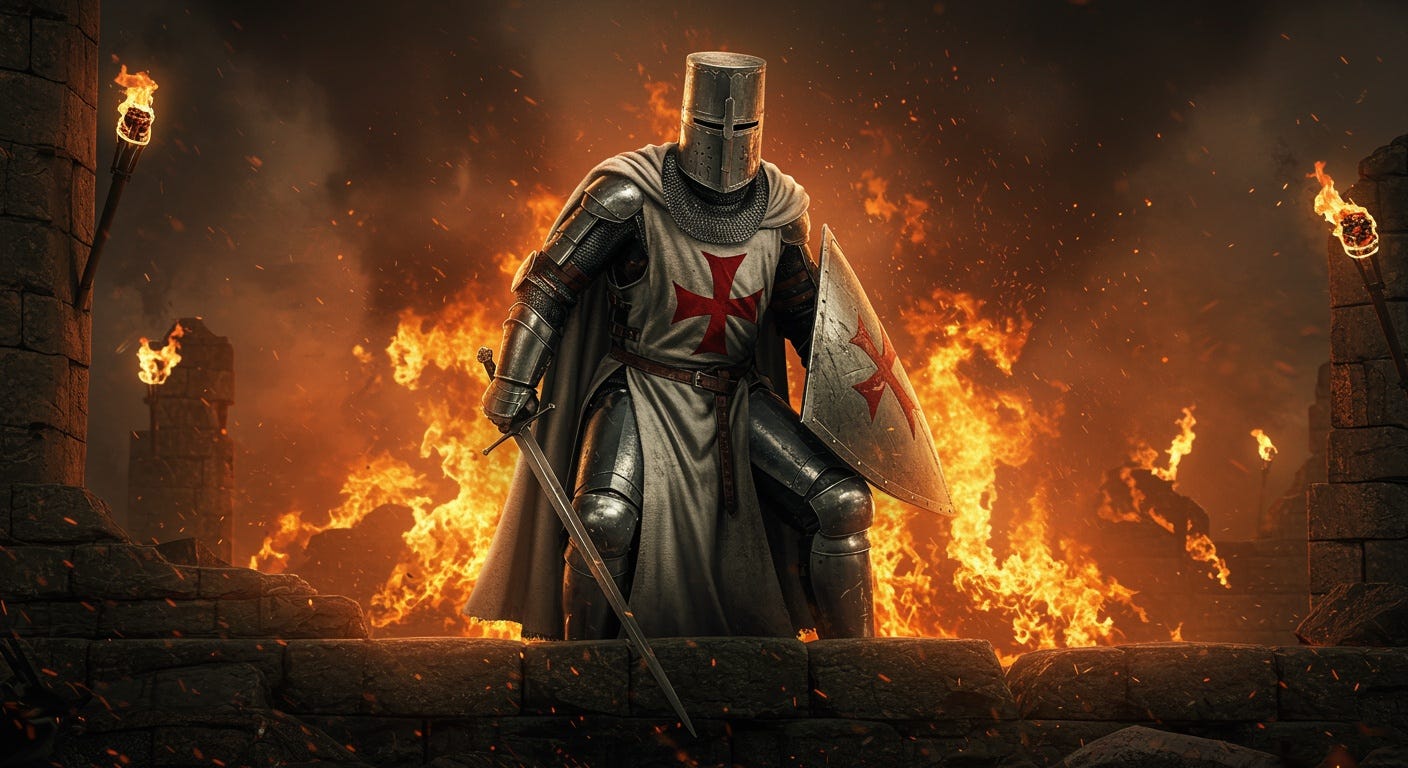How a city changed religion in Europe
Lisbon in Portugal was Muslim - and then it became Christian - how?
Greetings Gold and Silver Level Templar Knights! Lisbon today is the capital of modern Portugal and the majority religion is Roman Catholic. Go back eight hundred years and this city was called Al-Usbuna with a Muslim ruler. So, what happened?
Europe today is seeing major demographic changes that cause some anxiety and are exploited by those seeking to create division and hatred. But there is nothing new in any of this. In the medieval period, cities we now regard as thoroughly Christian were either majority Muslim or had Islamic rulers. This was the case with Lisbon, the capital city of modern Portugal.
Before the year 1147, Lisbon was ruled by a "Moorish" governor, a Muslim official who answered to the emir of Badajoz (which is now in modern Spain). Badajoz was a relatively small Islamic kingdom, referred to as a "taifa". The governor, or "alcaide", lived in the Alcazar (alcácer in Portuguese), which was a fortress within the walled "kasbah" (alcáçova in Portuguese) where the Moorish nobility resided in comfort - nearly all of them Muslim.
Beyond that were the winding streets of the "medina", the main city that stretched down the hillside where the ordinary people lived and conducted their business. At its heart was the Great Mosque, the main focus of worship. Though there were also Christian churches observing the Greek eastern rite and some synagogues for the Jewish population. The name of the city wasn't Lisbon, but Al-Usbuna. This was an Arabic word derived from the Roman name for Lisbon: Olisipo.
Al-Usbuna stood at the westernmost point of the global Islamic caliphate that stretched from modern Portugal to India and beyond. But it was no longer a united realm under a single caliph in Damascus or Baghdad. It had split into many emirates and petty fiefdoms, which allowed Christian crusader kingdoms to edge forward, eroding its territory.
From Muslim Al-Usbuna to the Christian city of Lisbon
By the year 1147, the glory days of Muslim rule in Spain and Portugal were in the past. But that said, the Muslim population regarded a city like Al-Usbuna to be just as Islamic as Fez in Morocco or Cairo in Egypt. Al-Usbuna had fallen to Moorish forces over four centuries before. Nobody could remember the city under a Christian ruler. So, there was no sense that a Christian takeover was inevitable.
However, in that fateful year, a rash and impetuous Christian prince turned up outside its impressive walls. Dom Afonso Henriques styled himself King of Portugal - a brand new kingdom that even the pope had not yet given formal recognition. All the hills surrounding Al-Usbuna were occupied by crusaders who bore down on the besieged population.
The Christian soldiers were not just Portuguese. Dom Afonso had convinced crusaders, including Templars, from several European countries to join him. They had been travelling by ship to the Holy Land, from Dartmouth in England, and stopped to pick up provisions in the northern Portuguese city of Porto. While there, the local bishop had made this rash promise: help us to take Al-Usbuna for Christ, and you can loot everything you want for three days before handing it over to us.
That kind of offer was hard to refuse. The siege was bloody and violent. Once the walls were stormed, houses, palaces, churches, and mosques were stripped of their valuables. The Great Mosque was demolished to be replaced by an imposing Normanesque cathedral. Even the local Christian bishop was murdered - his throat cut - as he was replaced a crusader knight, Gilbert of Hastings.
I wrote a novel about this siege - Quest for the True Cross - largely based on a contemporary account, De Expugnatione Lyxbonensi, written in Latin by a priest who was there.
If you would like to know more about the Knights Templar, then get your hands on a copy of my book: The Knights Templar – History & Mystery. Published by Pen & Sword and available on Amazon, Waterstones, Barnes & Noble, and WHSmith. Don’t miss out on your copy!






